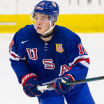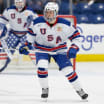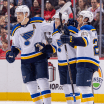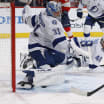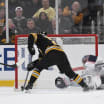Something has changed since NHL save percentage peaked at .915 in 2014-15 and 2015-16. It is no longer, as former Los Angeles Kings coach Darryl Sutter was so fond of saying, "a 3-2 League." Scoring chances have increased in quantity and quality.
Former NHL goalie Bill Ranford, now the Kings goaltending coach, sees it when he reviews game film. According to his math, he says Los Angeles gave up almost 400 more highest-quality chances last season when it won the Jennings Trophy for allowing the fewest goals in the NHL (202) than the 2011-12 team that allowed 170 goals and finished second to the St. Louis Blues (155) in the Jennings race. He says the 2018-19 Kings are on pace to give up 500 more "A chances," compared to the 2012 team that won the Stanley Cup.
"We've probably had five or six nights this year where your goalie gives up four or five goals and you are like, 'Wow, he played pretty well tonight,'" Ranford said.
"The rules have changed to allow these dynamic offensive players to be more successful. There's a lot of lateral plays, a lot more stress on the goalies, you can't box out as much because it's a penalty, so teams are better with traffic, which makes it tougher on the goalie. I think the game-in, game-out strain on the goalie has really increased."
So goalies have had to abandon the old standard about what constitutes a good performance for the position. The mindset that a good game is two goals or fewer allowed on 30 or more shots is counterproductive when you've given up three goals in the first period, especially with so many comebacks this season.
There have been 54 instances of a team winning a game it trailed by two or more goals in 2018-19, including 16 that rallied from down multiple goals in the third period.
"It's not fun to get scored on, obviously," Price said, "But definitely your approach has to be, I wouldn't say changed because you are always striving to stop everything that comes your way, so it's a slippery slope when you start thinking it's OK to let in four, but if you are still in a game and it's 4-3 you have to focus on the big picture."
That's what Hellebuyck did when the Canucks scored twice -- first on a shorthanded breakaway and then another one-on-one chance in tight behind the defense after a turnover -- to make it 4-3 in the second period.
"My mind kind of shifted," Hellebuyck said. "As opposed to, 'I am going to do whatever it takes to stop every puck,' now it's 'I am going to do whatever it takes to get this win and I am going to be called upon at some point in this game and I have to be ready for it.'"
Hellebuyck was. He stopped a third partial breakaway before the Jets extended the lead. His night finished with an .880 save percentage, but that wasn't the focus.
"I just had to be ready for my moment and was successful," Hellebuyck said.
In other words, he channeled Grant Fuhr.
Increasingly, that will be the task for many of his peers.









